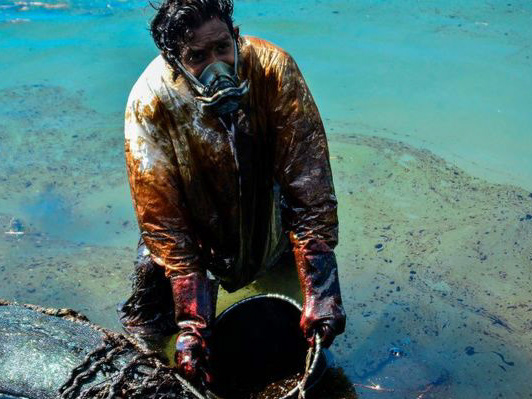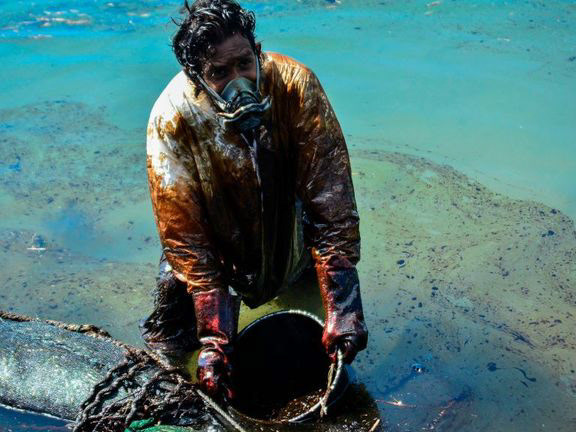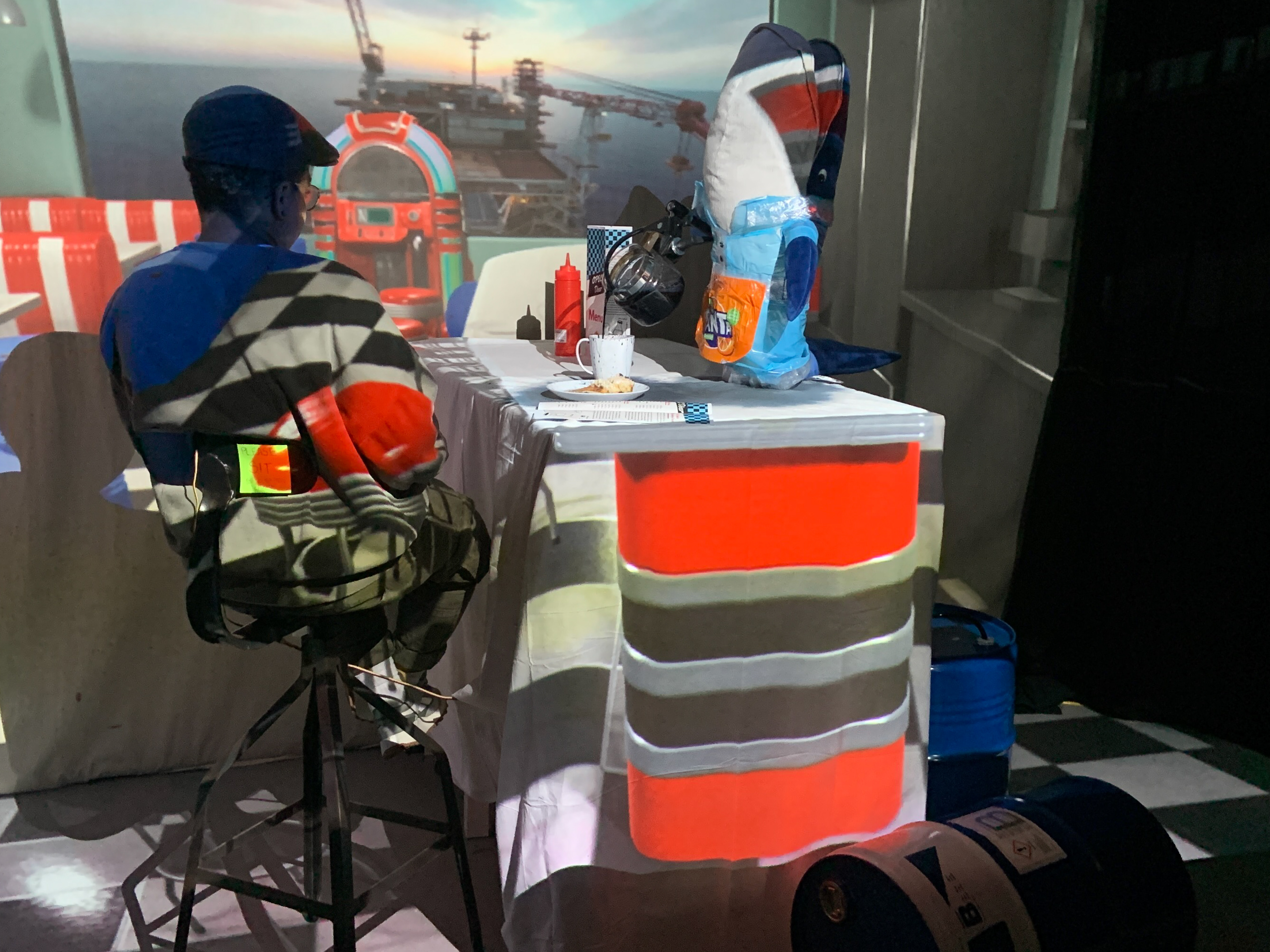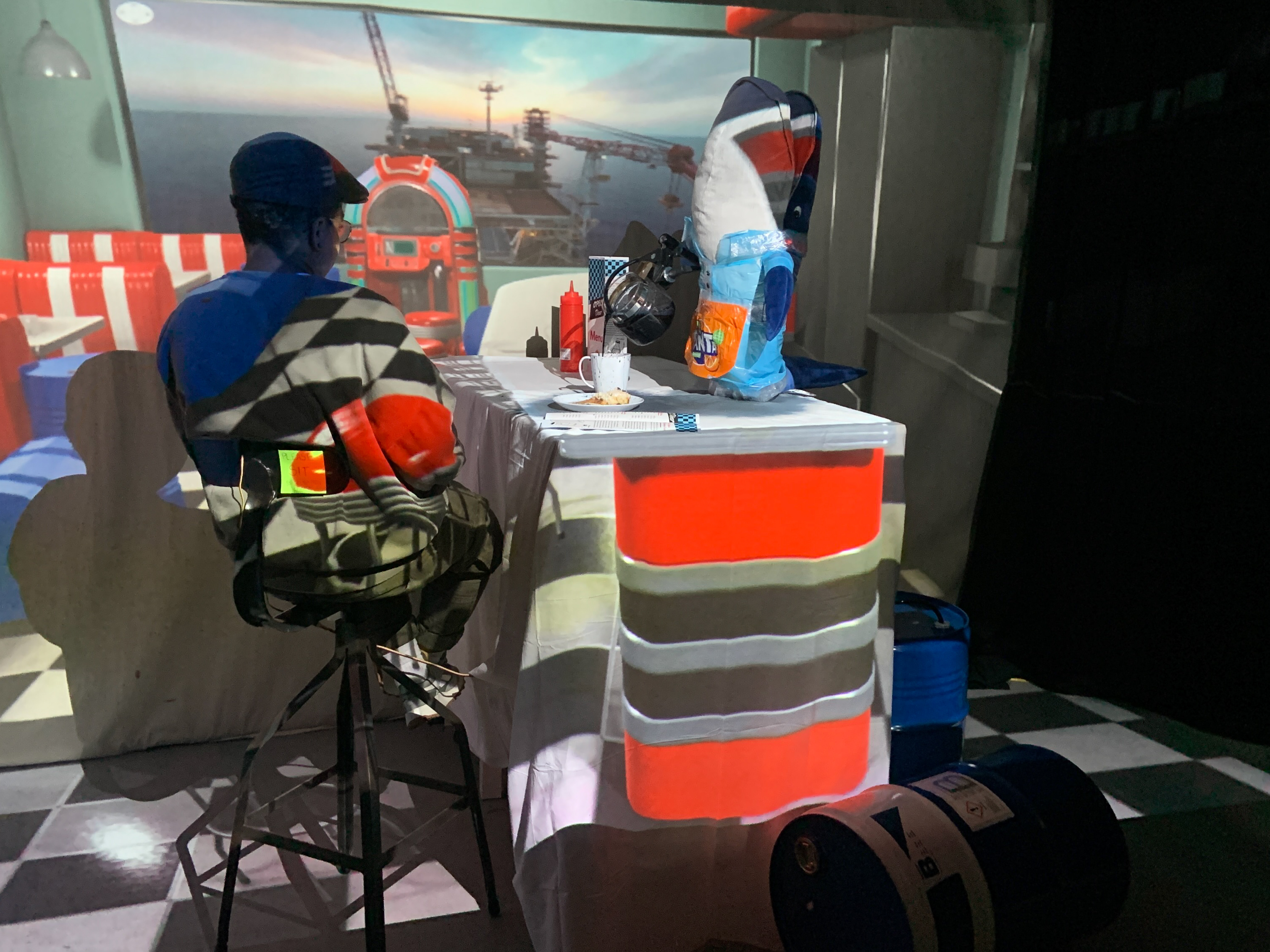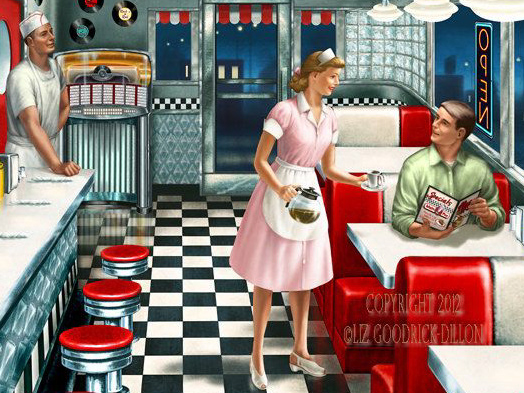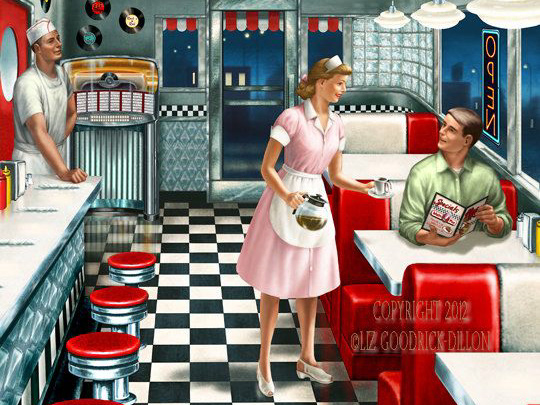Visuals



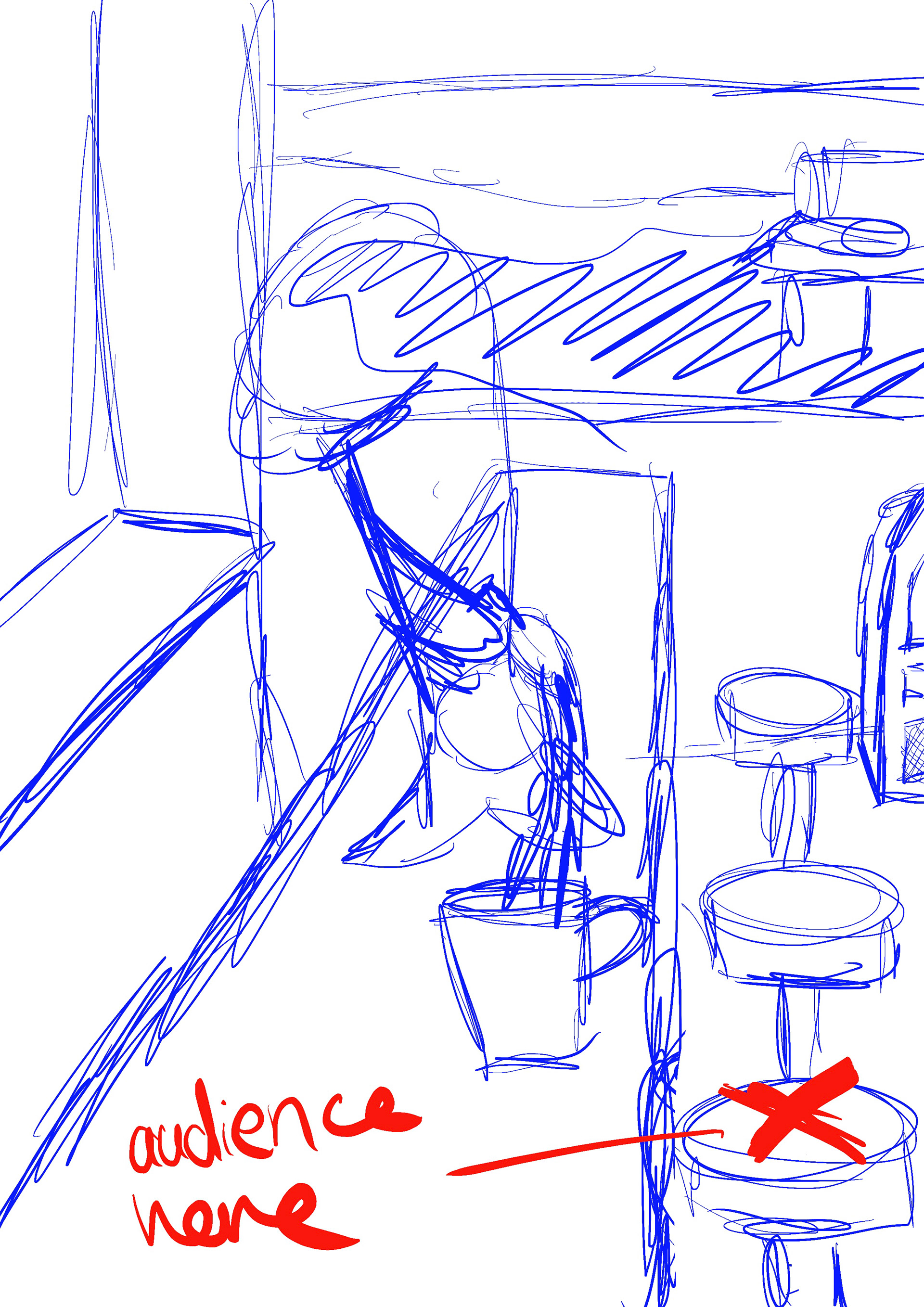
I sketched these concept visuals. I wanted to create an immersive, interactive experience that included the following elements
1. Whale pouring coffee
2. Oil Rig
3. American Dinner
I decide to go with this image to the right as I felt it was it would take up the least amount of space while also conveying what I wanted to convey. It also had the least amount of furniture to build (not having to build/find) a diner booth

Diner:
I started by taking a free blender model I found online and changing it slightly to fit what I wanted of the space. I then took screenshots of the angles I thought I might use
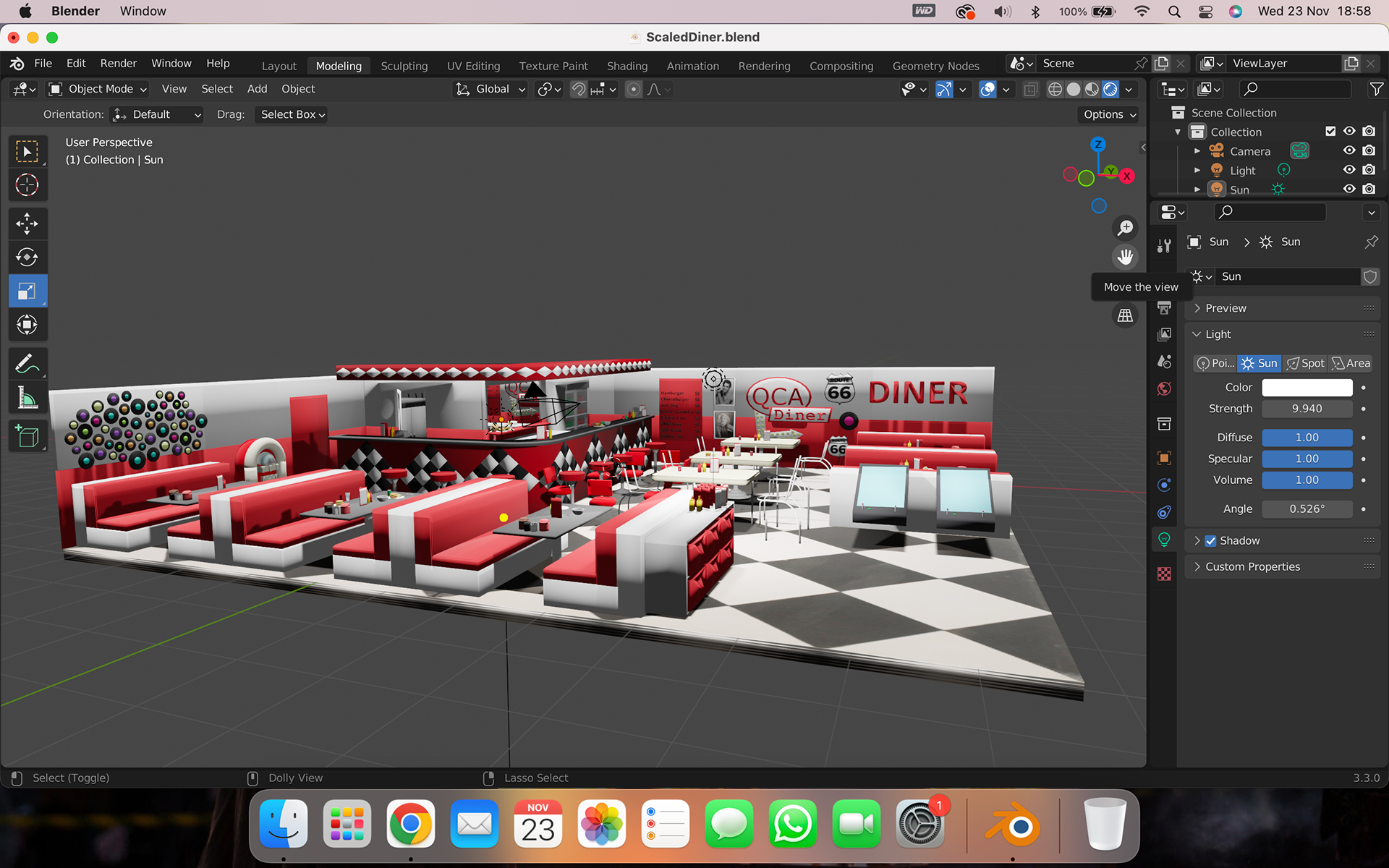
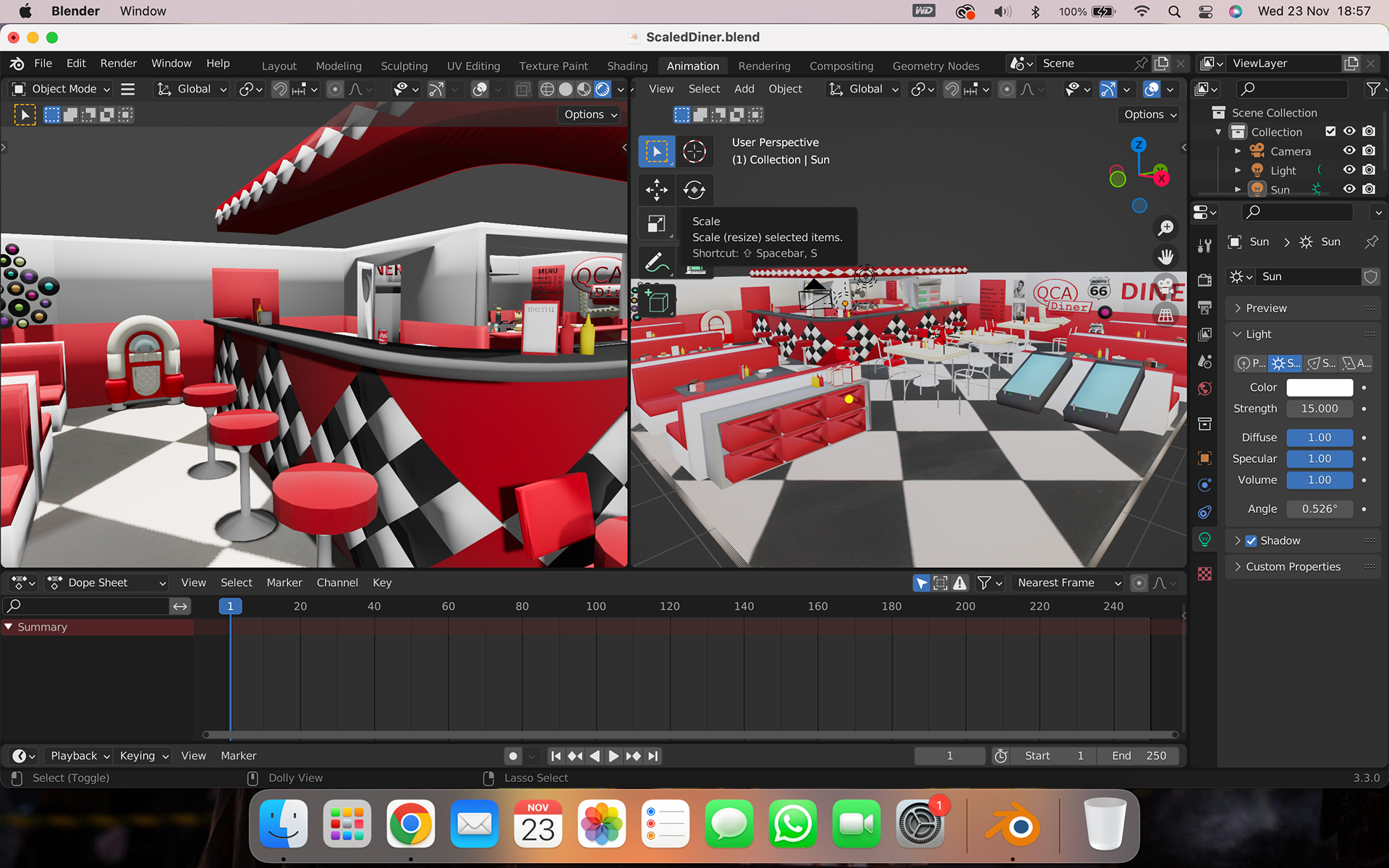
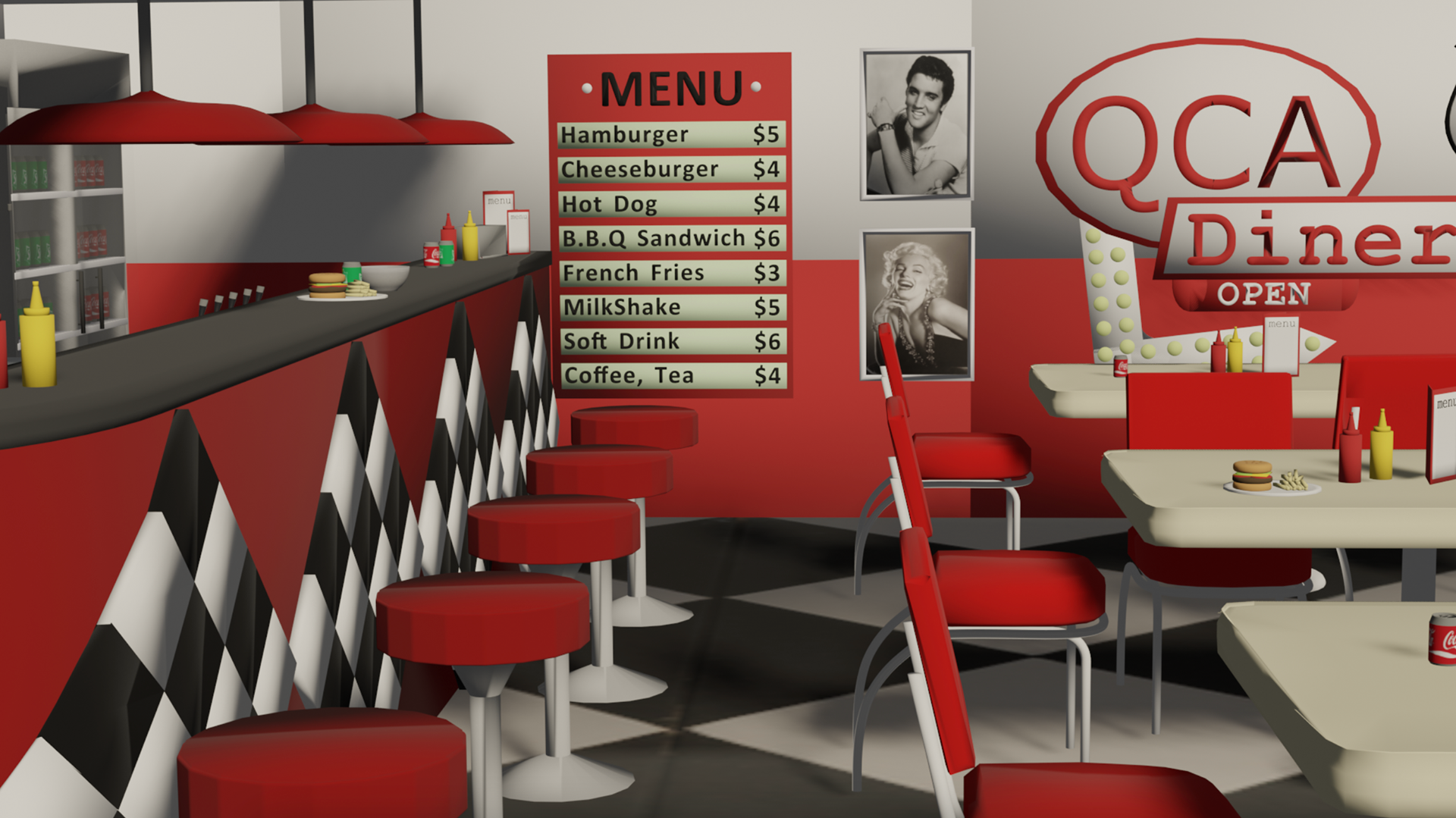
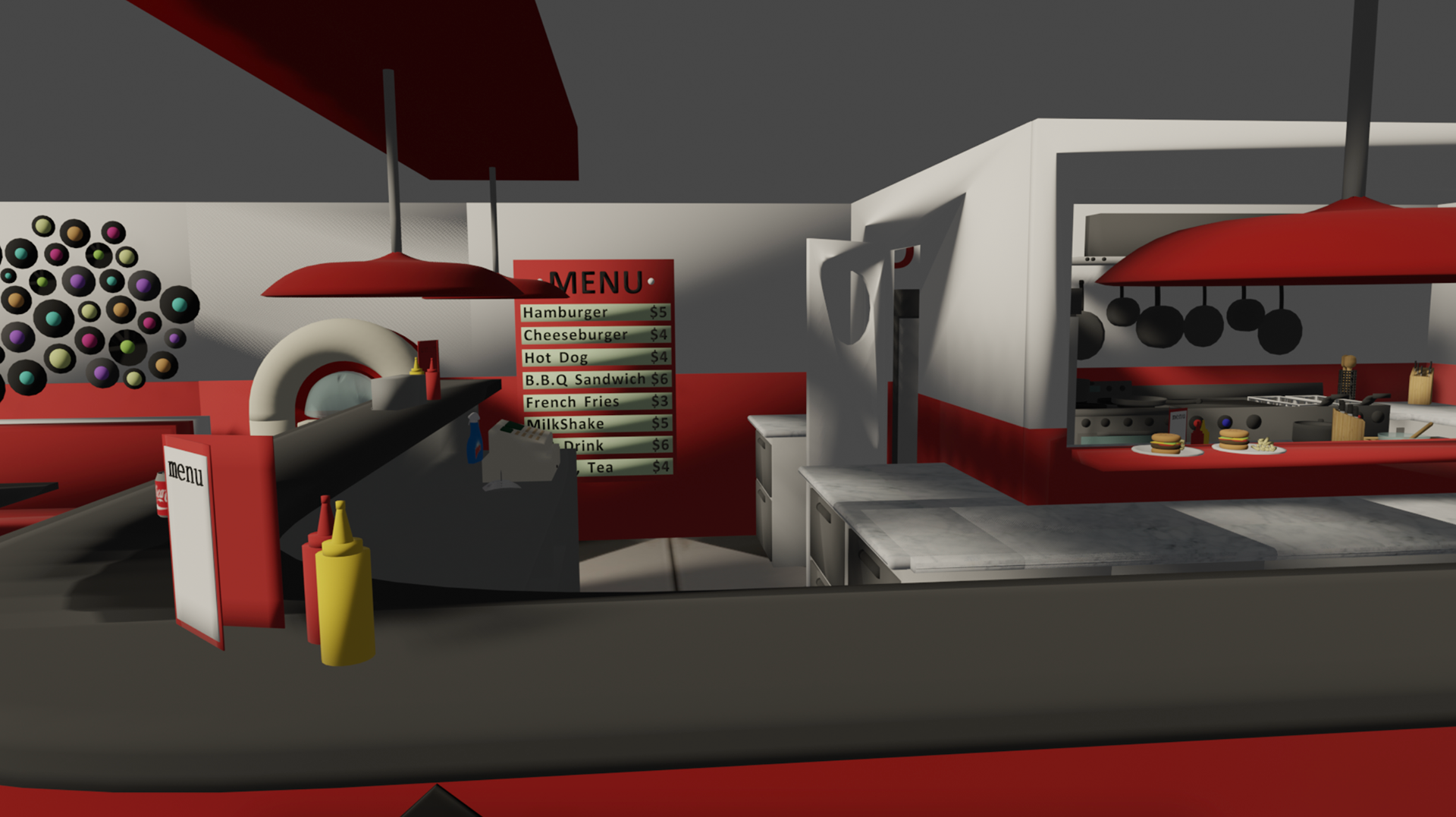

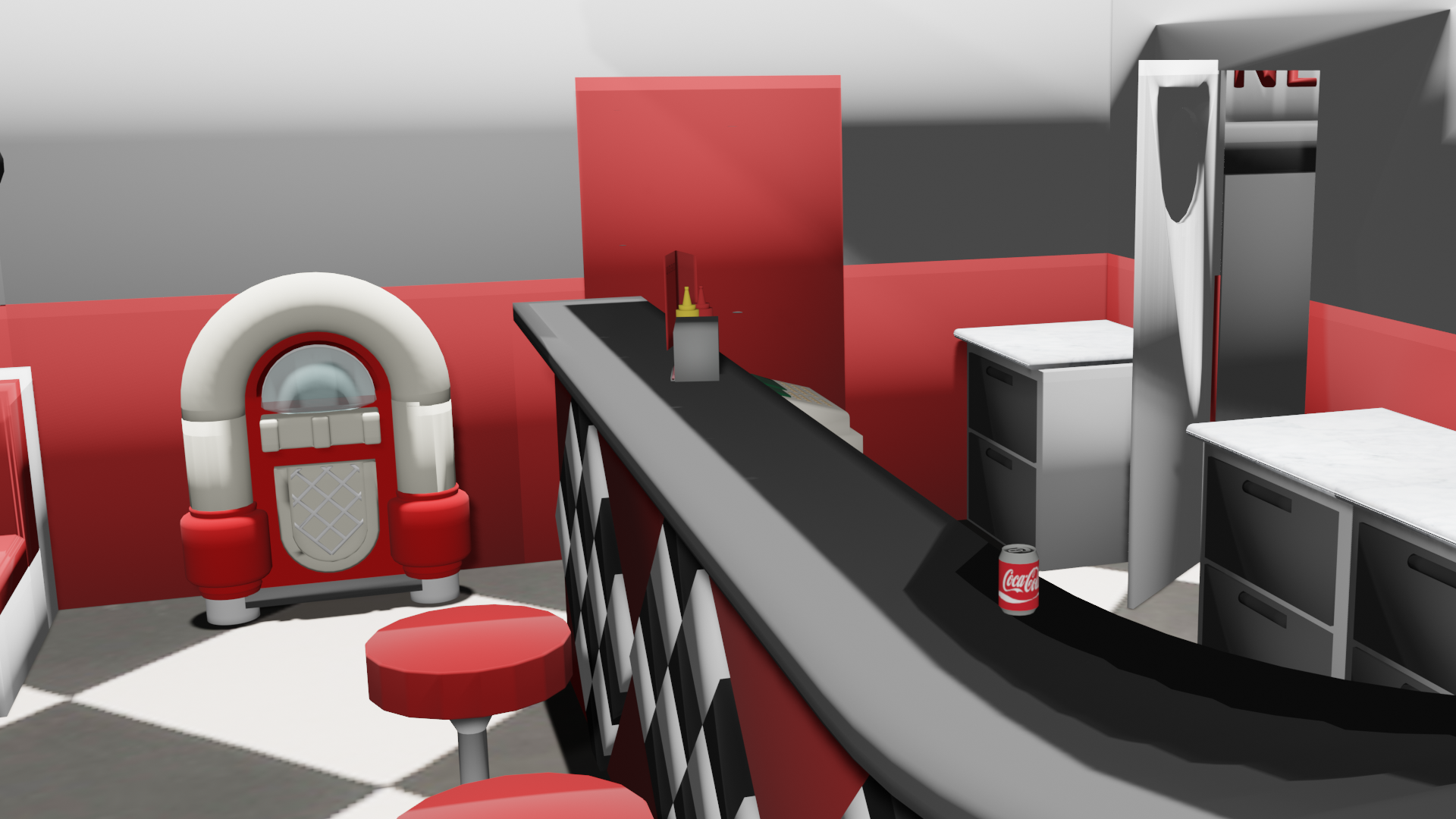
This was the first visual I decided to go with. I removed the menu as I found it was slightly distracting to the viewer as well as allowed me to put a window into the space for the video of the oil rig

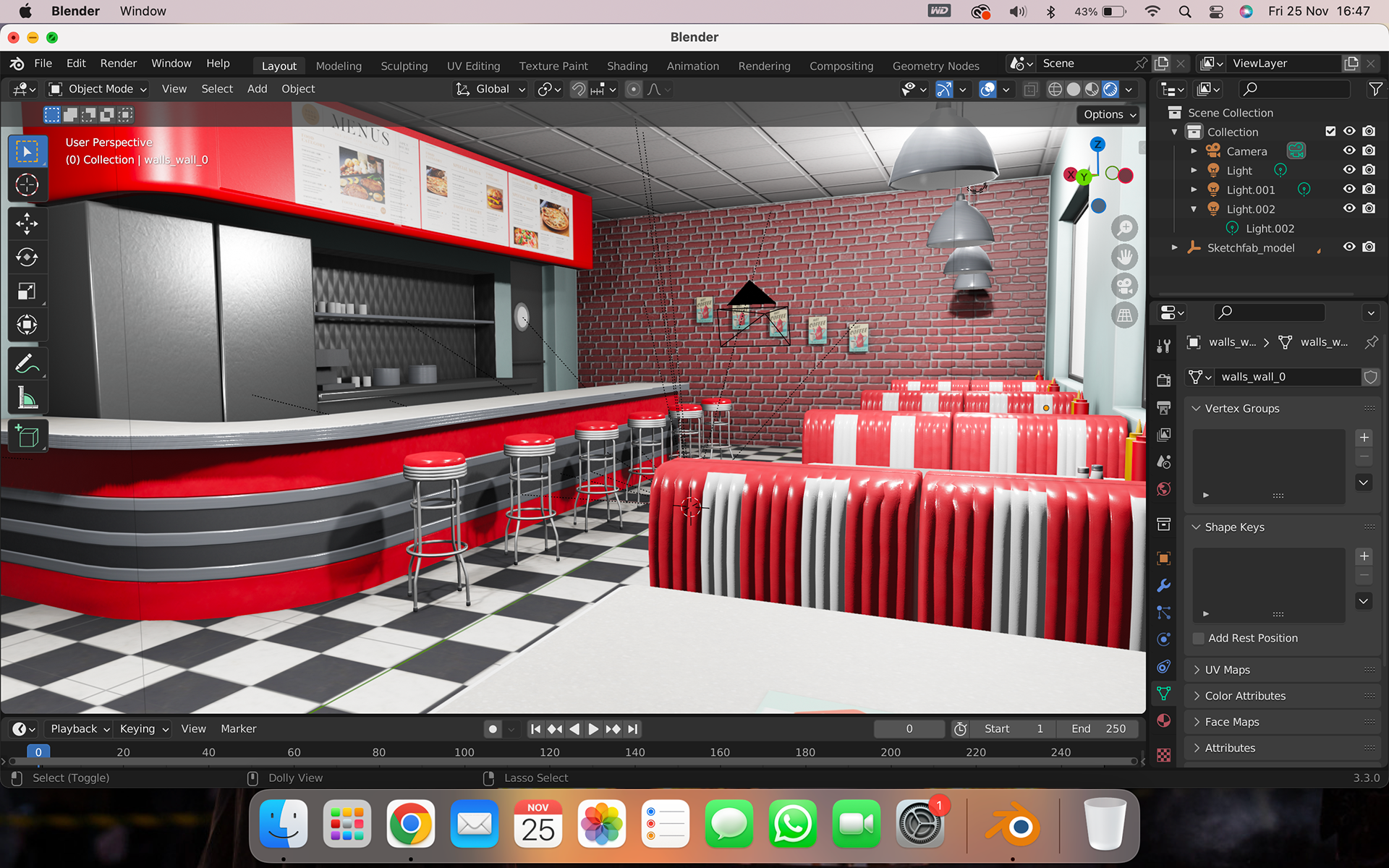

After receiving feedback from my peers I decided to change the design of the diner
Also, I decided to try to change the angle of the beamer to see if I could create a better effect
This is the final visual I decided to go with

After receiving more feedback from presenting a MidFi version of my installation, there was an overall agreement that the background was too empty so I went through the process of investigating what to put in the background. An original suggestion was people however I felt that that would not fit the theme I was coming up with. I decided to add whales to the seats instead. The sense of juxtaposition was still kept while also filling in the space


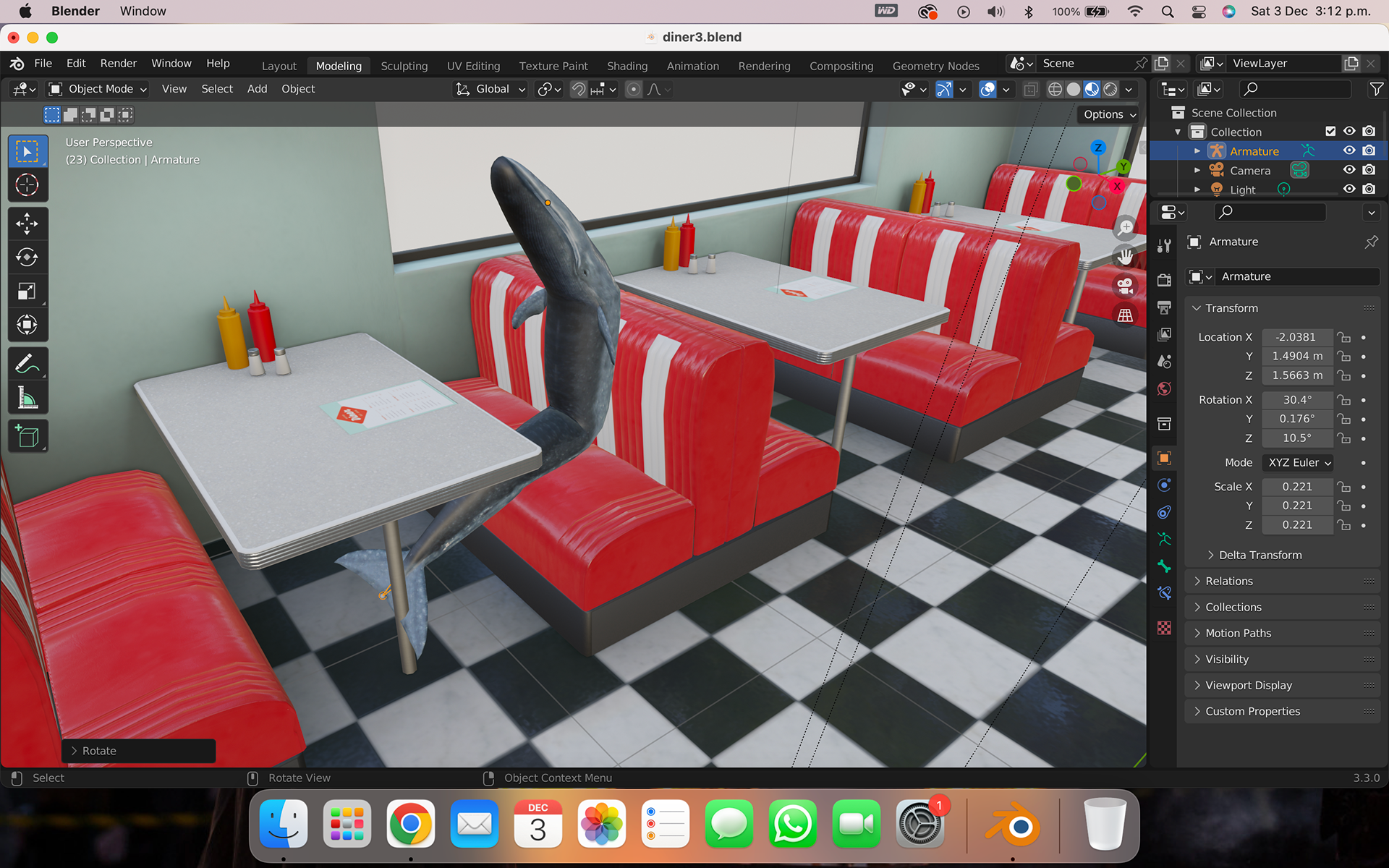
This was my final render from this alteration. I did feel that the background was now too overcoming. After getting talking to Jelke, he agreed with me and gave me the suggestion to keep the oil barrels but replace the whales with a jukebox and some cups, plates, and condiments. The admission of the jukebox would also help with the issue I was having with the audio (read more about this in audio)
This was my final render of the background I decided to use
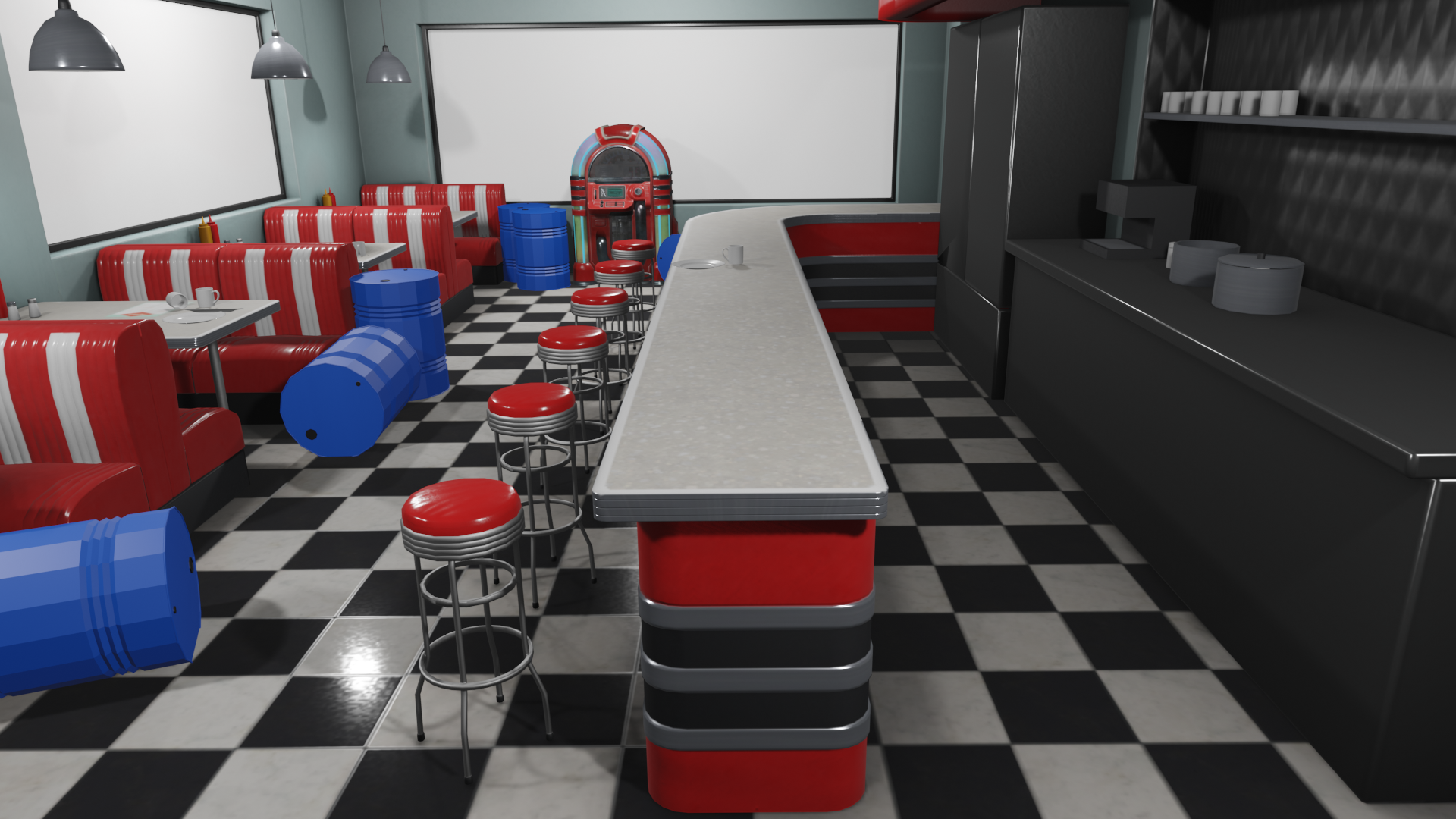
Oil Rig:
I looked online for videos from an actual oil rig. I found this video and thought it would be perfect for this project.
I took two screen recordings of this video, one straight on, and one to the left. I then brought them into Premiere Pro. In there I cropped and edited the timing so they would be the same length and be in sequence. You can see the completed videos below
Whale:
I decided early on to add a plastic costume to the whale. I chose this because I felt it would add to the sense of juxtaposition
This was my first attempt at adding a waitress dress made of plastic to the whale. I tried to add as much plastic as possible but in the end, I realised this wasn't going to work as it looked more like a wedding dress and took too much from the whale. So I restarted








I decided to be more careful and research waitress uniforms from the 60s. I noticed that these uniforms were tight at the top apart from the sleeves, and the skirt was loose and flowed outwards. I started with an "undress" like in the first image above but I tied it around the front of the whale to make it look like a button-up shirt. I then added a skirt and a waistband to recreate the ones I had seen in the photos. I then added sleeves and trims to the end of the skirt, sleeve bands, and collar of the shirt. Lastly, I readded the "Fanta" apron as a waitress at that time had them. Below you can see the final dress on the whale.


Audio
I then created background audio that included the ambience of the dinner, the background noise of the coffee machine with oil rigging mashed into it
After discussing and receiving some feedback from my classmates. They brought up some valuable points on how I could improve which include the following:
- I make the oil rig sounds more obvious in the audio,
- I add whale sounds as the whale was an important visual to my installation,
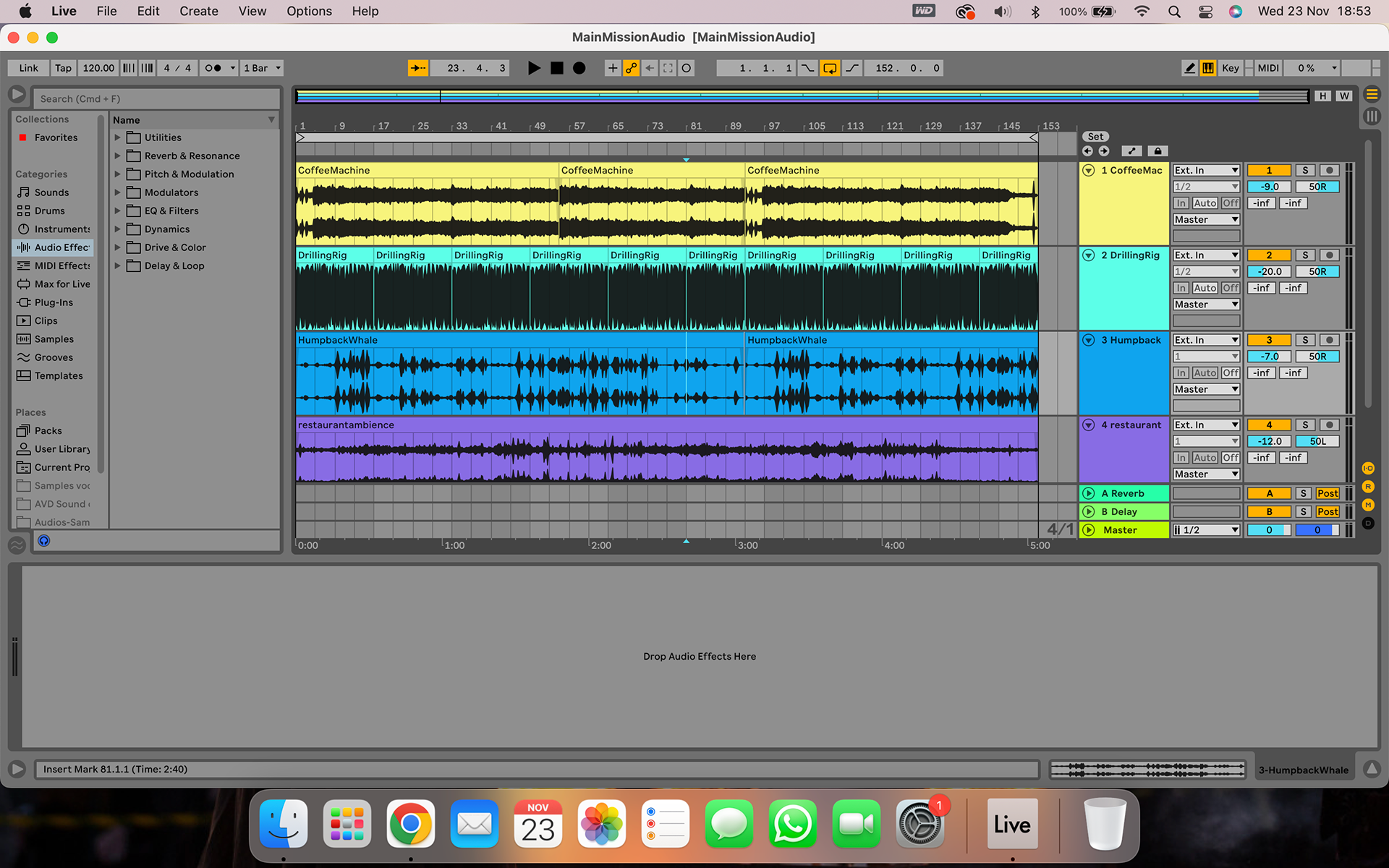

As you can see above, I added all the layers I wanted to include into the one Abelton file. I then used the panning tool to control what sounds went to what speakers. You can hear the first draft of my audio below (I recommend using headphone to listen to the audio and only wearing one headphone at a time to see the full effect)
The video above was me testing my audio, and specifically, the panning worked with the speaker. I achieved this by using an audio interface and linking the speakers you see in the video above, to the corresponding output. The panning did work in allowing the audio to play when someone was sitting in the seat, however, after receiving feedback I found that I needed to adjust the levels of the oil rig and the humpback whale songs so that the whales are more prominent and the rigging is less. This second draft can be found below
Draft 2 of my audio
After talking to my professor about the audio I realised that the people talking and the business of the place didn't work in the background as I wanted to create an empty feeling in the diner. I looked into music from the 60s and came across these songs
The Rolling Stones - Paint It, Black (album called Aftermath)
These songs stuck out to me for their melody, tempo, and title. In the end, I decided to go with the song, " What A Wonderful World", by Louis Armstrong. I chose this for two reasons. The irony of the title, and the eeriness that can be created by adding effects and key changes
This is the first draft of my audio


I wanted the song to sound far creepier and ominous than it is. I created this with the addition of a record player background and effects to the song. The effects I added included echo, reverb, and an EQ eight. I also played with the audio levels
By using EQ eight I was able to focus the audio to get rid of the end bits that didn't add anything to the song so when I added the echo and reverb it had a more prominent effect. The echo and reverb effect helped make the room feel emptier and the audience is alone in the diner. It also helped with the sense of eariness
Draft #3
After listening to this audio after it was rendered I felt that the audio levels weren't as balanced as I wanted them to be. I felt that the whale and oil rigging audio should be more subtle compared to the ambience sound. I then played with the audio levels which you can hear in the audio below.
Final Audio
Technicals
Coffee Pot:
Previous Rendition of Installations
I wasn't sure how I would make the circulation work so I asked the two best sources I knew; my dad and Ronald.
My dad told me I could use a small circulation pump to do this so I asked Ronald if they had one in the maker's space. There was one there so Ronald took the coffee pot to see how he could make it work.
As you can see from the video to the right, he was able to make the water circulate. I really like how this would work but I do need to find a way to:
1. Hide the mechanics
2. Find a cup that I could drill a hole into
3. Attach a whale pillow to the arm so it gives the illusion of the whale holding the pot




I found this plastic cup in SoLo. it was originally grey and pink but I spray-painted it to make it white. I did this as I wanted it to look like a traditional diner coffee cup.
I then, using a soldering iron, melted a hole into the bottom of the cup so I could feed the tubing for the water pump through it. I also plan to hide this tubing in a fake counter top that I will build.
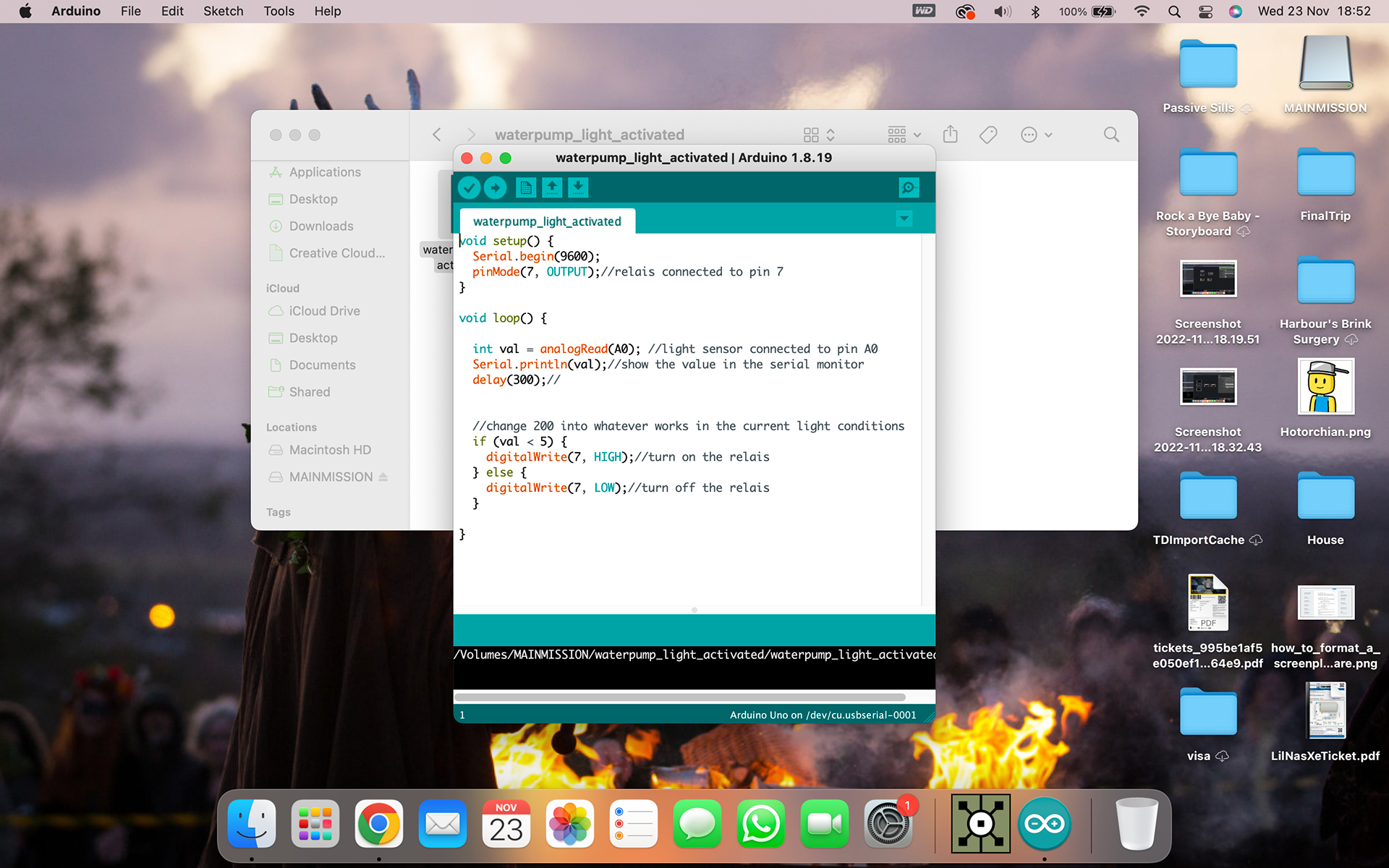
I also used sensors with the water pump so that the coffee pot doesn't pour unless someone is sitting at the bar. I did this using an app called Arduino and setting up code that let the
The video below is the first testing of the water pump with the sensor and cup attached (cup is in the bowl as I didn't want to risk leaking onto the electricals)
At the suggestion of one of my coursemates on how to hide the water pump, I decided to add a large oil barrel behind the counter. This was for three reasons
1. Set dressing ( I will discuss more under the "Set Dressing" section)
2. Hide the water pump
3. Incorporate the tubing from the pump that I could not hide into the piece
I plan to cut a panel out of the back of the barrel and place the water pump inside. The tube that goes from the water pump to the coffee machine will come out of the top, through one of the holes that already exist, and the tube that comes from the cup to the water pump will go through the panel that was created. The side of the barrel with the panel will be hidden from view. The tube to the coffee cup will stay visible but now make it appear like the coffee pot is being filled but the oil barrel (incorporating the tubing I was struggling to hide, into the piece)
I found two barrels at my local thrift. Using a multi-tool I cut a hatch into the side of one of them the barrel. I added black tape around the edge as I cut my wrist when opening the hatch and didn't want anyone else to get hurt. I also cut a hole in one of the openings at the top so that I could feed the tube through. You can see it in the video below the completed barrel. I plan to use the other barrel as a set dressing, having it laid on its side next to the other one.



TV and the News:
I found this while out buying other props for the installation and came up with the idea to link it to the senor and that when someone sits down, the TV also turns on showing news about oil spills

I found clips online of oil spills and compiled them into one montage video. Then, using a spare phone, I played the video on a loop and placed it on the TV.
Beamers & Projection Mapping:


I first started by using a beamer to project a png file of my blender file onto the scene.
I then found this youtube video while scrolling in my spare time and thought it might work better with projection mapping compared to just projecting the background
As you can see, I put my blender file into TouchDesigner. I struggled immensely however with getting the KatanMapper and projecting the Null. I did more research and found that projection mapping from a 3D model wasn't possible but in future software updates, it might be. I decided to stick with mapping renders from Blender and adding the oil rig videos to them

Oil Smell:
As I can't use actual motor oil due to health and safety, and vegetable oil due to the pump not being compatible with the circulation pump, I plan to use water, died with black food dye, and an essential oil diffuser with oil scent to create an illusion of motor oil in the cup

Unfortunately, I could not get the essential oil diffuser to work so I tested a wax melter and placed olive oil on top. This did work.
Set Dressing:

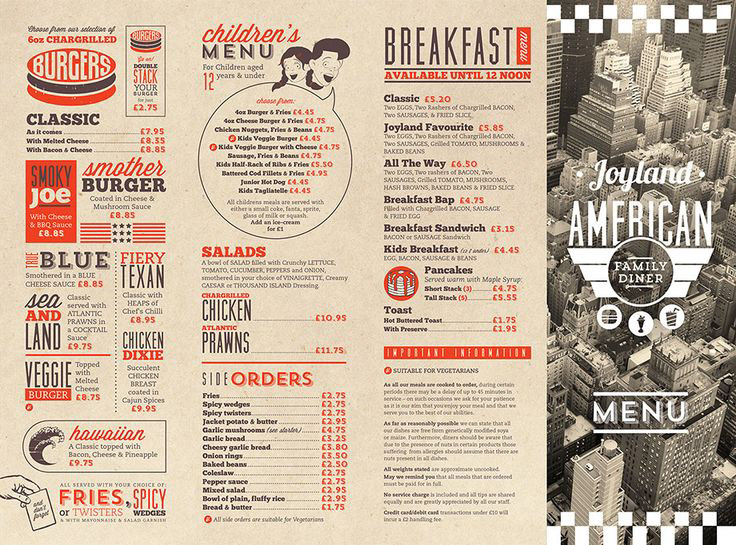

These are authentic 1960's menus I found online while researching how I wanted the menu to look.
I decided to go with the similar fonts and layout but I wanted to use the colours from the press photo as well as a more modern look to represent the 21st century struggles that we are facing with oil
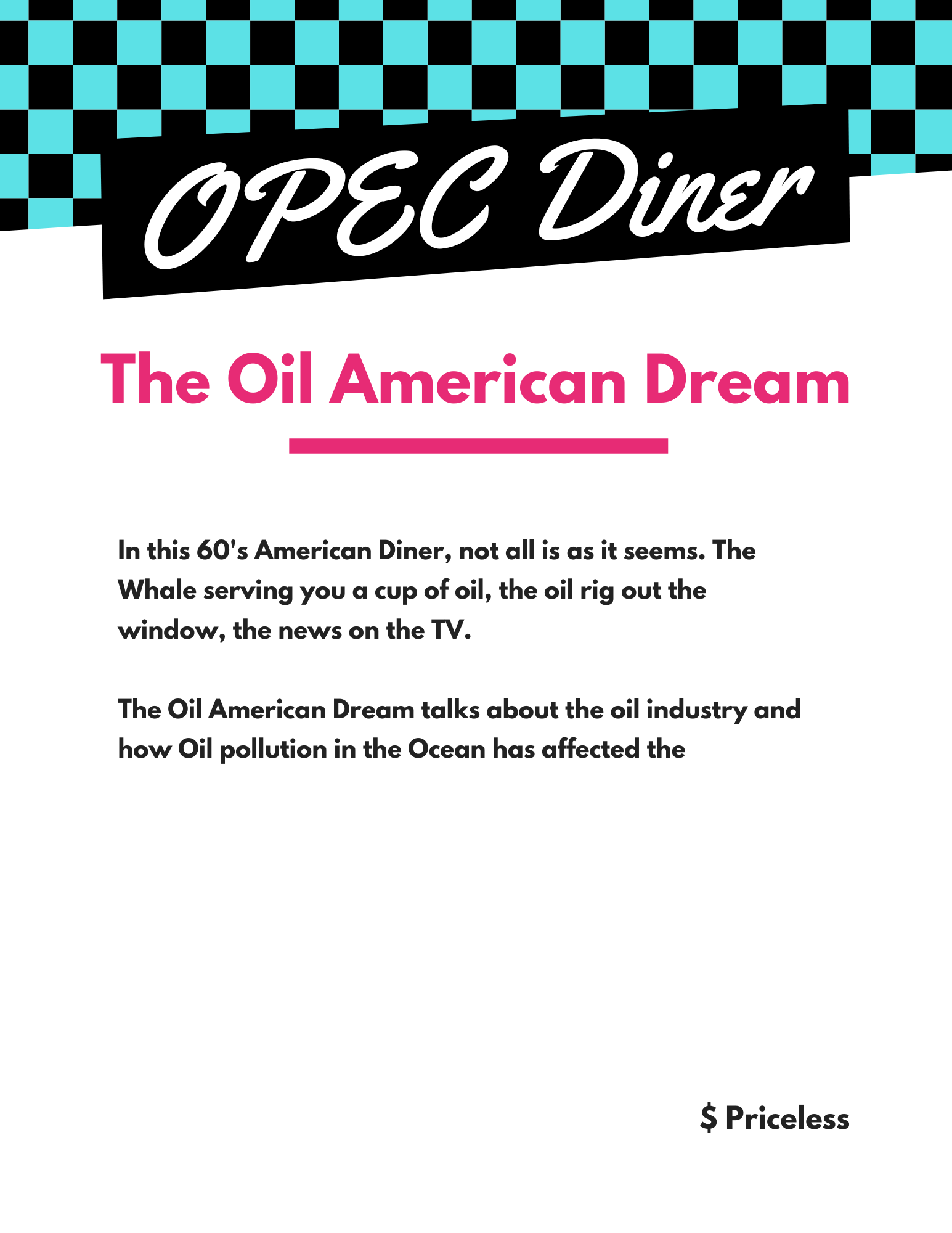

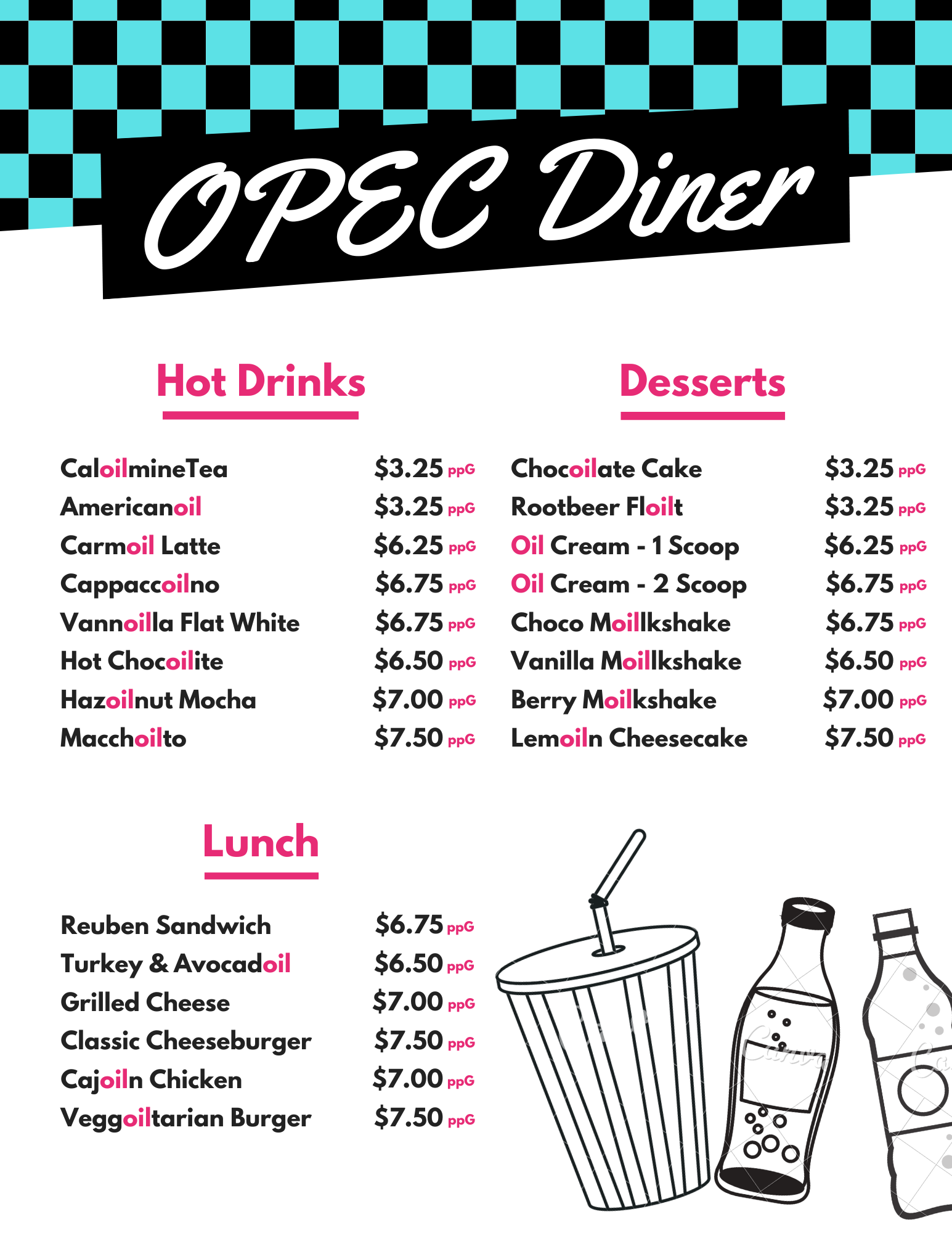

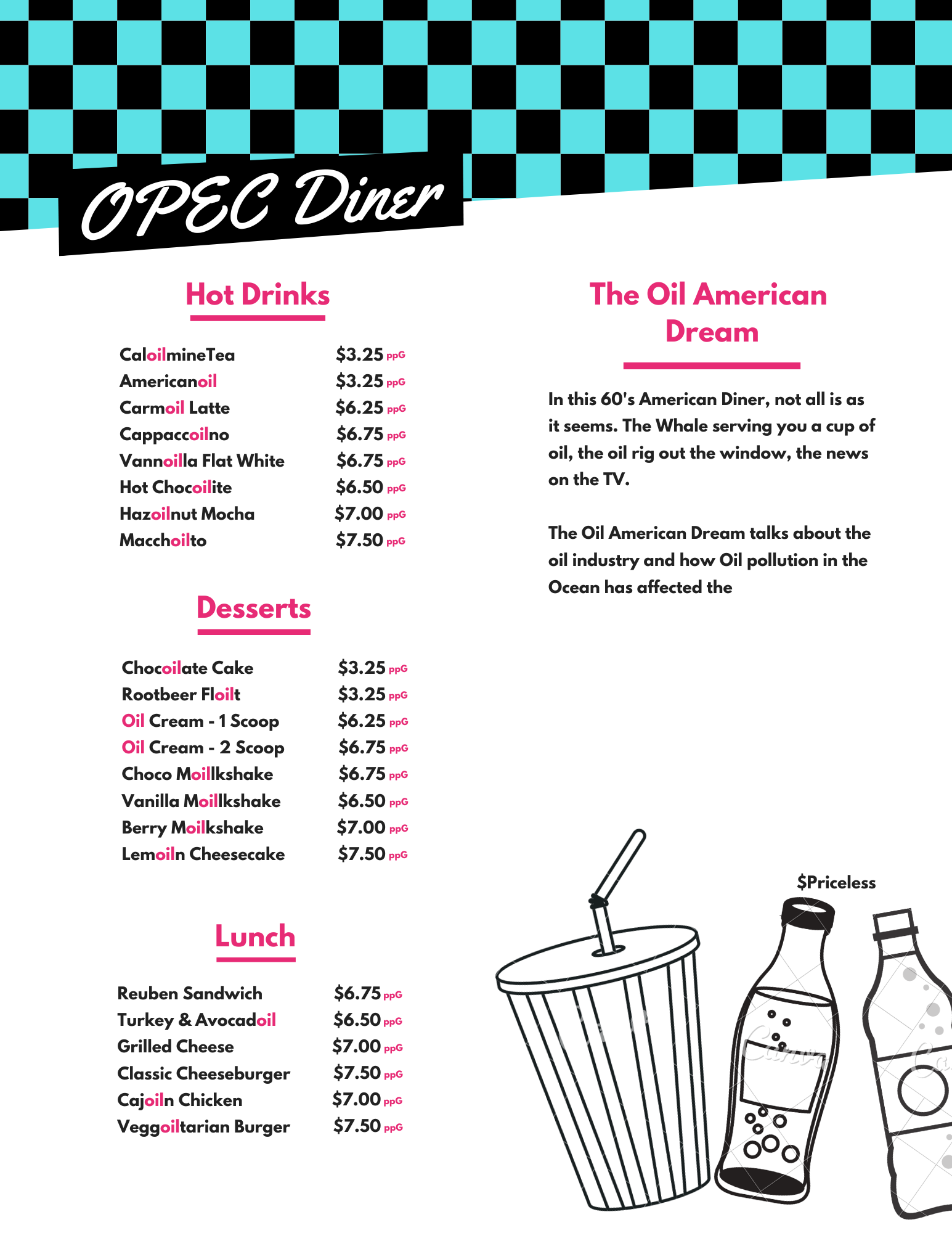

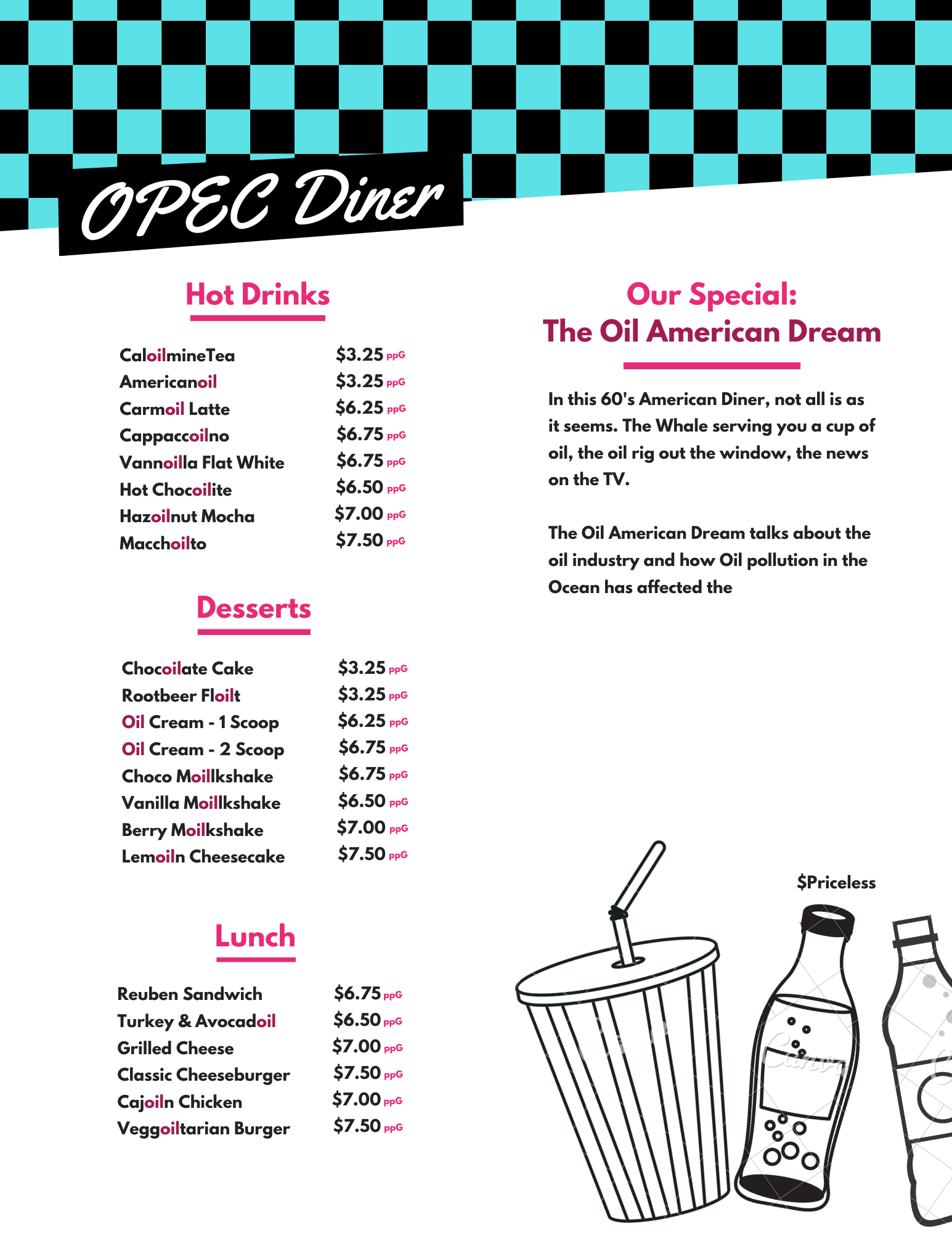
I started with a two sided flat menu. I wanted to work mainly on the content and what I wanted and didn't want to include. The most important thing to be included was the artist statement. However, I really wanted to include the use of puns in the food items. The inclusion of oil puns helped bring a sense of juxposition
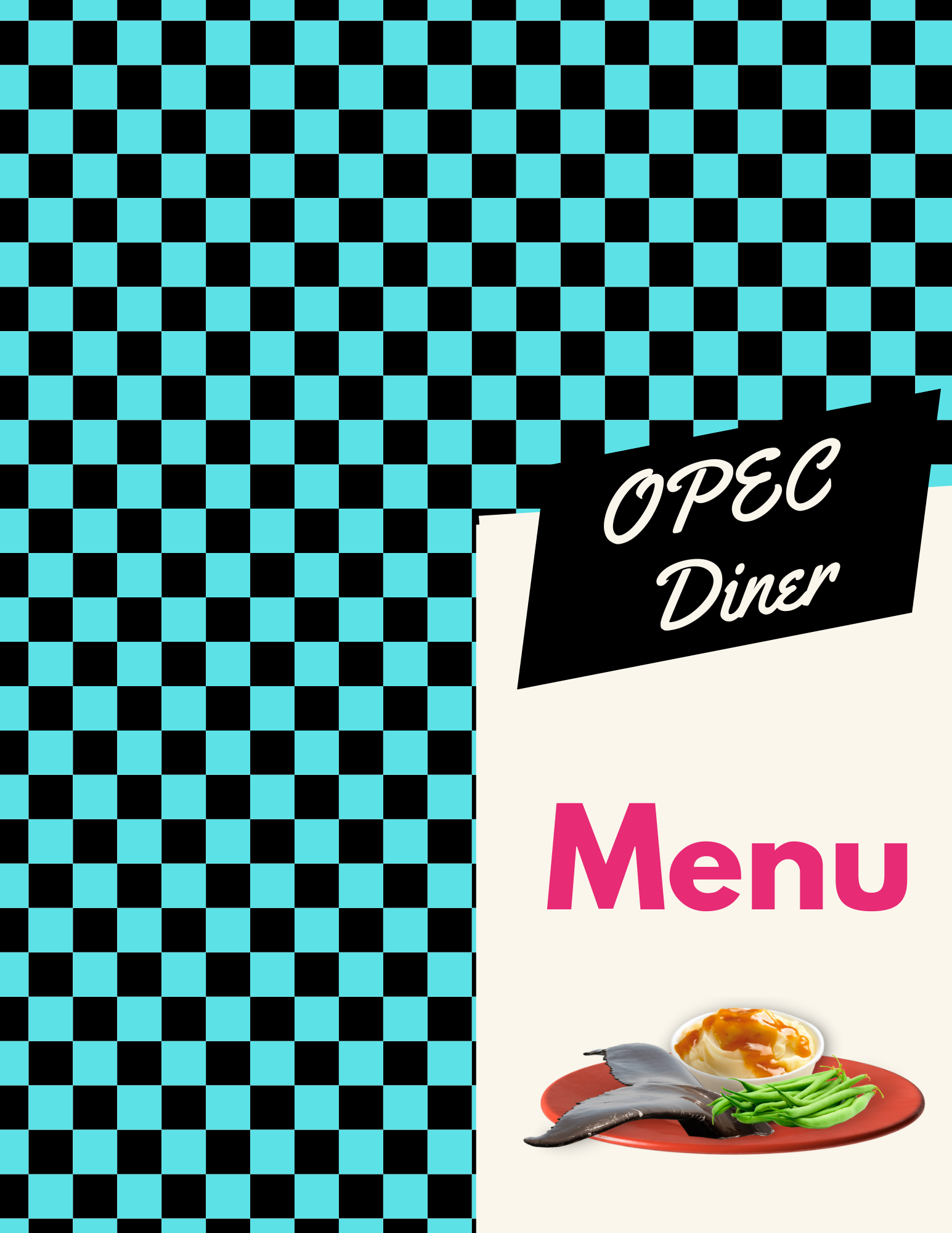

In the final version of the menu I added a realistic plated meal to the front of the menu similar to how the menus of the time would have. I also changed the background colour to be slightly off colour as I wanted a bit more contrast as well as having a similar look to orignal menus
Installation Set Up
Previous Renditions of the Installation
LoFi Installation:
This was my first presentation on the installation.
Add a big oil barrel to the other side of the table and hide the water pump in it so it looks like the coffee pot is being hidden in it
Artist statement on a menu which can be found on a table
Whale sounds weren't loud enough
Definitely add the oil rig window
MidFi Installation:
This was my second presentation on the installation.
Move the chair forward to face the background,
Move the TV to the corner of the background to create more focus on the whole piece not just the table
The background is too empty, add people,
Fix the oil rig in background
Oil Barrels were a great addition and the way I took the feedback from last time was really good
Whale sounds were too loud this time,
